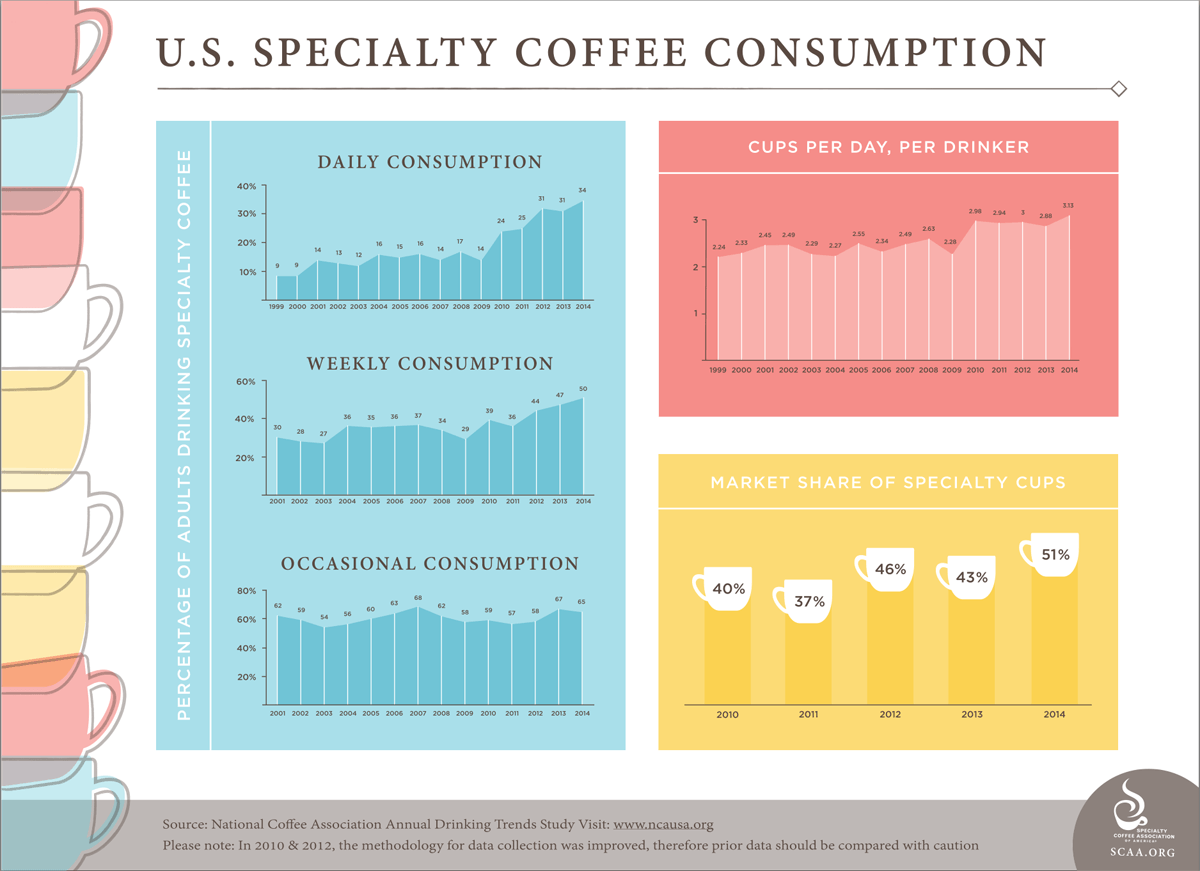Iced Coffee vs Cold Brew: A Quick Breakdown

There’s nothing like a refreshing glass of iced coffee on a warm Summer day. Despite what some hot-only coffee lovers believe, there’s plenty of room in the world for iced coffee—and it can be delicious! But here’s where some people get confused. What exactly is ‘iced coffee’? Is it just hot coffee poured over ice? No, not exactly. That’s generally considered the lowest form of iced coffee. We’re going to talk about flash brewed iced coffee (sometimes called Japanese pour over coffee) and how it’s different from cold brew coffee. These two iced coffee styles are pretty distinct and definitely worth learning about if you want to enjoy iced coffee to the fullest. Let’s check them out and see which is best for your lifestyle and taste preferences.
Flash Brewed Iced Coffee
So, we weren’t entirely honest. This iced coffee actually is made by pouring hot coffee over ice. Except, it’s not. Yeah, it’s confusing. Allow us to explain.
How To Make Flash Brewed Iced Coffee
Brewing this style of iced coffee involves brewing pour over coffee and allowing the draining liquid to fall directly onto ice. There’s no ‘middle period’ between the brewing and the icing—both steps are part of the same process. For the most part, to make this happen, all you have to do is add some ice cubes into your normal carafe or glass and cut your brewing water volume by 30%. Then you brew like normal. Some specific recipes suggest cutting your water more to account for the melting ice, but 30% is a safe estimate without getting too technical. Now let’s see why this is very different from just pouring hot coffee over ice.
What Flash Brewed Iced Coffee Tastes Like
Here are a few ways this particular brewing method is distinct from just pouring hot coffee over ice…- The aromas stay in the glass. Rather than evaporating away because they’re hot, the vibrant aromas are cooled down instantly and stay in the cup. This enhances the flavor of every sip.
- The coffee strength is pleasant. Rather than pouring normal coffee with ice to create a diluted, weak mess, the water usage is reduced from the start to create a richer and more balanced glass of iced coffee.
Since you’re still brewing with hot water, you get a crisp acidity, stunning sweetness, and rich flavor profile. It’s so much more balanced and tasty than the old way of making iced coffee.
Cold Brew Coffee
Cold brew’s a little newer, but it’s far more popular. It’s not just a little different from flash brewed iced coffee—it’s way different.
How To Make Cold Brew Coffee
The idea behind cold brewing is pretty simple: use cold water to extract different flavors from the coffee and give it extra time to do so (since cold water doesn’t extract nearly as fast as hot water). But there are actually two ways this is accomplished…- Immersion Cold Brew — The simplest way to make cold brew is to simply immerse coarse grounds in cold water for 12+ hours. It takes so long because the extraction rate slows down at the water becomes more like coffee, but it’s very hands-off and can be done with almost any container.
- Slow-Drip Cold Brew — Ever seen a big tower slowly allowing single droplets of water to fall on the coffee grounds? Those fresh drops of water to quickly extract flavor before draining into the server below. It’s faster (3-6 hours long) since every drop of water is pure and ready for extraction.
Immersion brewing is way easier to do at home since you can just use a french press or mason jar, but slow-drip towers sure are visually captivating.
What Cold Brew Coffee Tastes Like
Acids, sugar, aromatic oils—almost everything in coffee reacts differently to cold water compared to hot water. While most compounds are still extracted, their concentrations are different, because… science. This causes cold brew coffee to taste very different from regular hot coffee and even flash brewed iced coffee. Here’s what we mean…- The aromatic oils are still in the coffee. Without heat to make the oils evaporate, those vibrant aromas are perfectly preserved in the cold brew coffee.
- Acids and caffeine are far less concentrated. Both of these compounds extract very slowly in cold water, which means you end up with less of them in your final brew (up to 66% less!). This leads cold brew to be less tangy and less bitter than any other coffee.
Thanks to these changes, cold brew has a very rich and sweet flavor, but virtually no acidic tang or bitterness. That’s why so many people enjoy cold brew that don’t enjoy normal hot coffee. It’s smoother, generally less sharp, and very refreshing. You can use any coffee to make both styles of iced coffee. Exploring how these brewing methods change each bean’s flavor is fun and interesting. Check out our lineup of specialty coffees and start experimenting with your own iced coffee at home.





